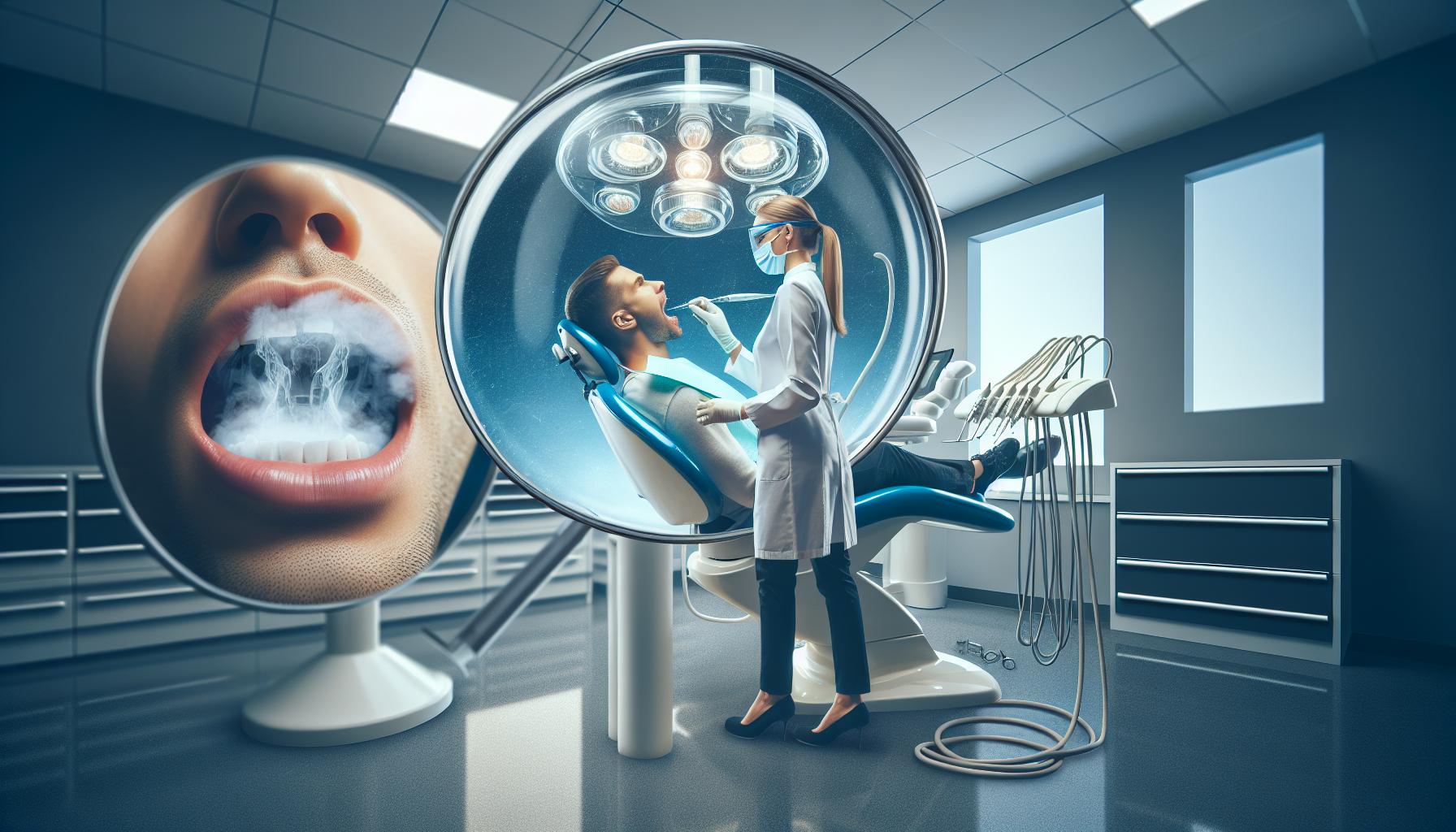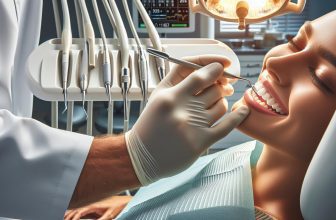
Can nitrous oxide kill you at the dentist? It’s a question that might make you chuckle nervously, but it’s worth exploring. We’ve all heard of “laughing gas” making dental visits a bit more bearable, but the idea of it being dangerous might have you second-guessing that next appointment.
As someone who’s spent more time in the dentist’s chair than I’d like to admit, I get it. The thought of anything going wrong is enough to make anyone squirm. But let’s dive into the facts and separate myth from reality. After all, knowledge is power, and in this case, it might just make your next dental visit a little less daunting.
Key Takeaways
- Nitrous Oxide Safety: Nitrous oxide (“laughing gas”) is safe when administered by professionals, with dentists ensuring proper monitoring and dosage controls throughout the dental procedure.
- Common Uses: It is commonly used to reduce anxiety and manage pain during dental procedures. Its rapid onset and quick recovery make it a popular choice.
- Safety Measures: Dentists prioritize safety through accurate dosage control, continuous monitoring of vital signs, and using advanced equipment, minimizing any risks.
- Potential Risks and Side Effects: While generally safe, nitrous oxide can cause short-term effects like dizziness or nausea and, in rare cases, severe complications due to improper use.
- Preventative Steps: Proper equipment maintenance, comprehensive staff training, and thorough patient assessments are crucial preventive measures to ensure safe use of nitrous oxide in dental practices.
Understanding Nitrous Oxide
Nitrous oxide, often called “laughing gas,” is a colorless, sweet-smelling gas used in dental procedures to reduce anxiety and pain. Dentists administer it through a mask, mixing it with oxygen so patients inhale both gases. The gas produces a calming effect, allowing patients to feel relaxed during treatments.
I know patients might worry about the safety of nitrous oxide. Dentists train extensively to ensure they administer it safely. The American Dental Association (ADA) states that nitrous oxide is safe when used correctly by a professional. Dentists monitor patients’ oxygen levels and adjust the gas flow accordingly. This careful monitoring prevents any potential complications.
Nitrous oxide has a rapid onset and offset. Patients start feeling relaxed within minutes. Once the mask is removed, the effects wear off quickly, usually within minutes. This quick recovery time makes it a popular sedation choice.
Despite its safety record, it’s essential to understand that risks exist with any sedation method. Dentists take precautions to minimize these risks, such as assessing patients’ medical histories and current health conditions. Doing so ensures that nitrous oxide is appropriate for each patient.
Understanding how nitrous oxide works and the safety measures dentists take can help alleviate any concerns. Patients can rest assured knowing that dental professionals prioritize their well-being during every procedure involving nitrous oxide.
Common Uses In Dentistry
Dentists use nitrous oxide in various ways to enhance patient experiences and outcomes. These applications address key aspects of dental care, making procedures more comfortable and accessible for many individuals.
Anxiety Reduction
Nitrous oxide helps alleviate patient anxiety during dental procedures. It’s particularly useful for those with dental phobia. Inhaled through a mask, it induces a state of relaxation. The gas starts working quickly, making it ideal for short procedures. Many patients report feeling calm and euphoric. This sedation option enables them to tolerate treatments they might otherwise avoid. When patients feel less anxious, dental visits become more routine rather than dreaded events. For children and special needs patients, nitrous oxide’s ability to minimize stress is invaluable. Let’s consider its efficiency: rapid onset, ease of administration, and minimal recovery time. Together, these factors make anxiety management more effective.
Pain Management
Beyond reducing anxiety, nitrous oxide also plays a crucial role in pain management. It dulls pain receptors, making procedures like cavity fillings and extractions more bearable. Dentists often combine it with local anesthetics for enhanced effect. This combined approach allows for thorough dental work without discomfort. Adjusting the dosage throughout the procedure ensures optimal comfort. Its reversible nature means patients quickly return to normal sensation post-procedure. This rapid offset minimizes recovery time, adding to its appeal for both patients and dentists. Overall, this sedation method improves procedural outcomes, allowing for precise work without patient distress.
Safety Measures
Dentists prioritize patient safety when using nitrous oxide for sedation.
Dosage Control
Accurate dosage control is essential in administering nitrous oxide. Dentists calculate the appropriate dosage based on a patient’s medical history, age, and weight. Variable-flow machines allow for precise adjustments of nitrous oxide and oxygen levels, ensuring patient comfort. Standard practice involves starting with a low concentration and gradually increasing it to the desired effect. Too much nitrous oxide can lead to adverse effects like nausea, dizziness, or loss of consciousness. Hence, careful titration minimizes risks. The American Dental Association (ADA) advises on maximum dosage limits, ensuring adherence to safety guidelines. Immediate availability of oxygen helps reverse effects if necessary. Multiple checks during the procedure maintain optimal sedation levels. Through these measures, dentists mitigate potential hazards associated with nitrous oxide sedation.
Monitoring Equipment
Continuous monitoring is vital to ensure patient safety during sedation. Dentists employ advanced monitoring equipment to track vital signs like oxygen saturation, heart rate, and blood pressure. Capnography monitors carbon dioxide levels, providing real-time data on respiratory status. Pulse oximeters, placed on a fingertip, measure oxygen levels in the blood. This data alerts dentists to any deviations from normal levels, prompting immediate corrective actions. In addition, EKG monitors help track heart rhythms, ensuring cardiovascular stability throughout the procedure. The combination of these devices allows for comprehensive patient monitoring. Regular equipment calibration ensures accuracy and reliability. Dentists trained in emergency response can quickly address any arising complications. Implementing these monitoring techniques enhances patient safety during dental procedures involving nitrous oxide sedation.
Risks And Side Effects
Nitrous oxide can be a useful tool in dental procedures, but it’s important to understand its potential risks and side effects.
Short-term Effects
Patients might experience dizziness or nausea right after nitrous oxide administration. Some report mild headaches and fatigue, which usually fade as the gas wears off. Occasionally, tingling in the arms and legs, known as “paresthesia,” can occur.
Certain patients experience shivering or chills during the recovery period. It’s essential to communicate any discomfort to the dentist immediately. Rarely, excessive nitrous oxide can lead to confusion or hallucinations. Disorientation may also arise, especially if the dosage isn’t accurately controlled.
In a few cases, patients might have difficulty breathing, which a dentist can quickly address by adjusting the nitrous oxide levels. The American Dental Association (ADA) regulations ensure medical personnel are trained to handle such instances effectively.
Patients with asthma or other respiratory conditions need close monitoring. Sudden drops in blood pressure and irregular heartbeats are uncommon but can happen if the patient has underlying health issues.
Long-term Effects
Prolonged exposure to nitrous oxide could potentially lead to more serious health concerns. Continuous use in unregulated environments might result in vitamin B12 deficiency. This deficiency can lead to anemia and neurological problems.
Chronic exposure, especially for dental professionals, may cause cognitive impairment. Memory loss and difficulty concentrating could develop over time. Moreover, there’s evidence that repeated exposure may reduce fertility in both men and women.
Mishandling nitrous oxide due to inadequate training can damage the peripheral nervous system. Tingling and numbness in the limbs may become permanent. Workers in dental settings need to follow occupational safety guidelines strictly to avoid these dangers.
Regulatory bodies like the ADA emphasize the importance of proper equipment maintenance and training. These safeguards ensure that both patients and professionals remain safe from the long-term risks of nitrous oxide.
Severe Complications
Nitrous oxide can sometimes lead to severe complications if not used correctly during dental procedures. While generally safe, understanding potential risks can help ensure patient safety.
Potential Causes
Several factors might lead to severe complications. Reaction to a high concentration of nitrous oxide can cause hypoxia. Insufficient oxygen might result if the gas isn’t mixed correctly. Pre-existing medical conditions could exacerbate risks when combined with nitrous oxide. Specific allergies might trigger an adverse reaction. Lack of proper equipment maintenance can also play a role.
Additional causes include prolonged exposure to nitrous oxide, which may lead to nerve damage or cognitive problems. Without proper ventilation, nitrous oxide accumulation can become a hazard. During dental procedures, anxiolysis or sedation needs close monitoring to avoid over-sedation. Inadequate training of dental personnel increases the likelihood of complications.
Case Studies
Several documented cases illustrate the potential risks of nitrous oxide misuse. In one instance, a patient experienced severe hypoxia after an incorrect gas mixture. This episode underscored the importance of equipment checks. Another case involved a child with an undiagnosed genetic disorder. The administration of nitrous oxide led to severe neurological effects, highlighting the need for thorough pre-procedure assessments.
In a documented scenario, improper maintenance of apparatus resulted in gas leakage. The patient suffered from nausea and hypoxia, pointing to the necessity of regular equipment inspections. A final case involved miscommunication among dental staff. The patient was over-sedated, causing respiratory problems and requiring emergency intervention. This incident emphasized the importance of comprehensive training for all personnel involved in sedation procedures.
These cases show the importance of vigilance, proper procedure, and equipment maintenance in mitigating the risks associated with nitrous oxide in dental practices.
Prevention And Best Practices
Dentists take several key steps to ensure nitrous oxide is used safely. They always administer controlled dosages, observing ADA guidelines. Regular monitoring of vital signs during procedures adds an extra layer of safety. Proper training for dental staff is crucial, reducing the risk of complications.
The maintenance of equipment plays a significant role in safety. Dentists frequently inspect and service their machines to avoid malfunctioning. Comprehensive ventilation systems also help in preventing nitrous oxide build-up in the clinic.
Dentists conduct thorough assessments before using nitrous oxide. Patients with certain medical conditions might be at higher risk, so identifying these risks upfront is vital. Allergies to nitrous oxide or its components are also checked prior to any administration.
During the procedure, continuous observation ensures the patient’s well-being. Monitoring devices alert the staff to any signs of hypoxia or other adverse reactions. Training sessions for dental professionals cover these protocols extensively, preparing them to handle emergencies.
Clear communication with patients about the procedure is equally essential. Dentists explain the process, its benefits, and any potential risks, ensuring informed consent. This transparency builds trust and helps patients feel more at ease.
Conclusion
Nitrous oxide is a valuable tool in modern dentistry when used correctly. Dentists follow stringent guidelines to ensure patient safety, including controlled dosages and constant monitoring. Comprehensive training and proper equipment maintenance are crucial in preventing complications. By adhering to these best practices, the risks associated with nitrous oxide are significantly minimized. Patients can feel confident in the safety measures in place, making their dental experience both comfortable and secure.
Frequently Asked Questions
What is nitrous oxide used for in dental procedures?
Nitrous oxide, often known as “laughing gas,” is used to sedate patients during dental procedures. It helps to reduce anxiety, pain, and discomfort, allowing for a more pleasant dental experience.
How do dentists ensure the safe use of nitrous oxide?
Dentists ensure safety by adhering to ADA guidelines, controlling dosages, monitoring vital signs, and maintaining proper patient assessments and continuous observation during procedures.
What are the benefits of using nitrous oxide in dentistry?
The benefits include reduced anxiety, increased comfort, and enhanced cooperation from patients, leading to a smoother and more efficient dental procedure.
What precautions are taken to prevent complications with nitrous oxide?
Dentists follow best practices such as using controlled dosages, maintaining equipment, providing proper training, ensuring proper ventilation, and conducting thorough patient assessments.
Are there any risks associated with using nitrous oxide?
While generally safe, nitrous oxide can pose risks like hypoxia, adverse reactions, and allergies. Proper protocols and comprehensive training help minimize these risks.
How is the dosage of nitrous oxide controlled?
Dental professionals use careful measurement tools and guidelines to ensure the dosage is appropriate for each individual patient, tailored to their specific needs and medical condition.
Why is monitoring vital signs important during nitrous oxide administration?
Monitoring vital signs helps track the patient’s response to the sedation and ensures their safety, allowing for immediate intervention if any issues arise.
What specific training do dentists undergo for nitrous oxide use?
Dentists receive comprehensive training on the administration of nitrous oxide, including dosage control, patient monitoring, and emergency response procedures.
How important is equipment maintenance when using nitrous oxide?
Regular equipment maintenance is crucial to ensure the correct delivery of nitrous oxide and prevent any malfunction that could jeopardize patient safety.
Why is proper ventilation necessary in dental practices using nitrous oxide?
Proper ventilation systems are essential to remove excess gas, maintaining a safe environment for both staff and patients and preventing accidental exposure.









